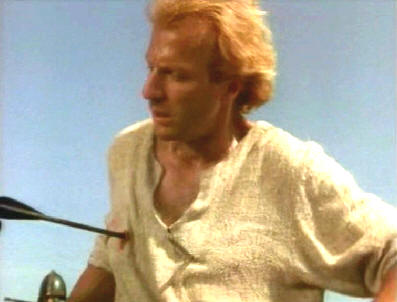
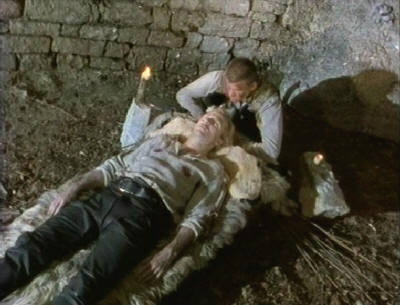
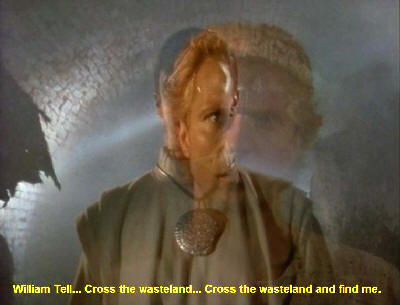
The Tarn gorges and the Causse of Sauveterre, Lozère, France. The real wasteland in Crossbow.
After
William was killed by Gessler,
he is resurrected with a sort of strange Celtic ritual (Ep 49 "The
touch"). During this ritual, a female voice from beyond asks William
to cross
the wasteland and find her. It's unclear why William decides to obey, rather than leading the revolution triggered by his martyr (Ep 50 "Spirit of rebellion"), or simply returning to
his owns. After all he is free now that the empire is falling apart and Gessler is loosing his mind. But he decides to do so and August helps him to find this wasteland (Episode 50).



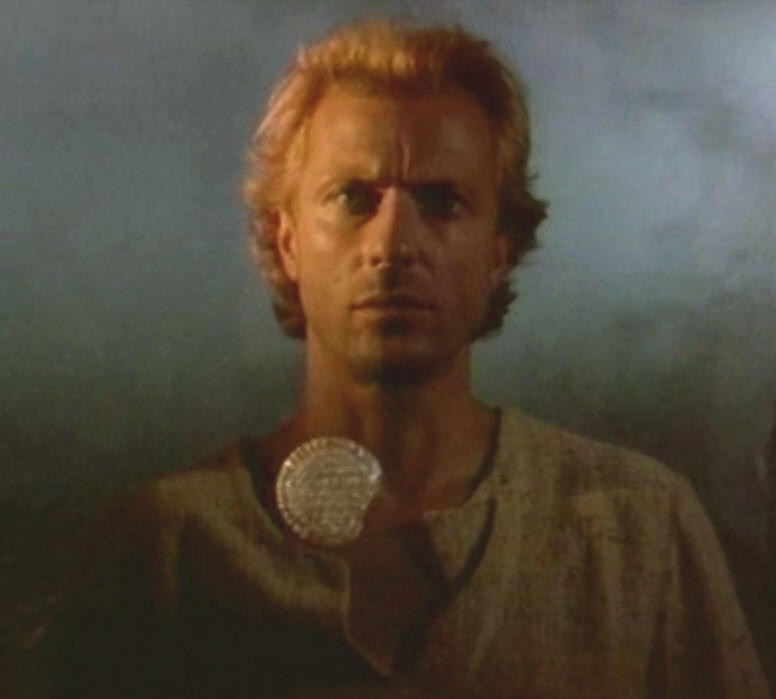
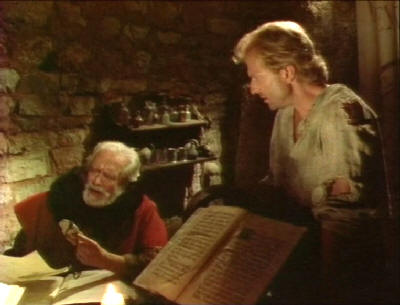
A terrible truth emerges when William and Gessler are captured by Horst (54 "The mission"). Horst barely survived under the blazing sun of the wasteland, where he had
been banned by Gessler. What had led him to accept this awful condition is beyond comprehension, but now he wants William and Gessler to suffer the same fate. After Gessler
told him that William was resurrected, he decides to track William through the wasteland in order to discover his secret. But he will be defeated in the episode 62 "The bridge".
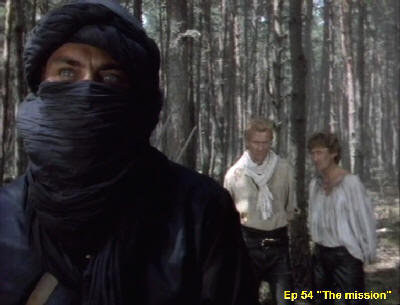
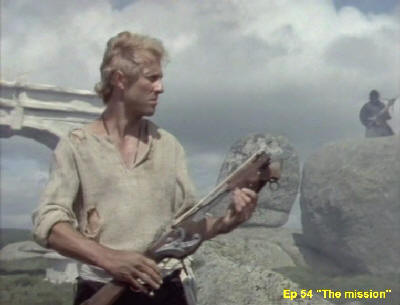
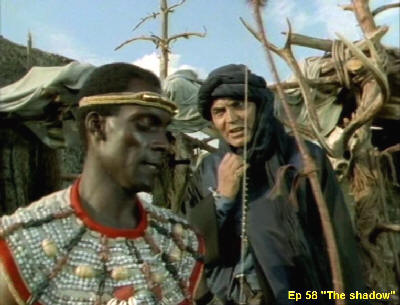
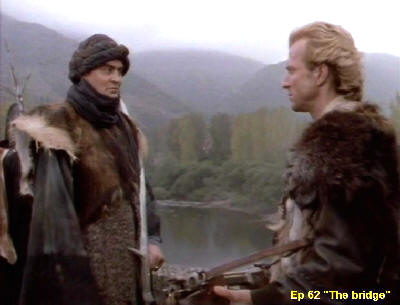
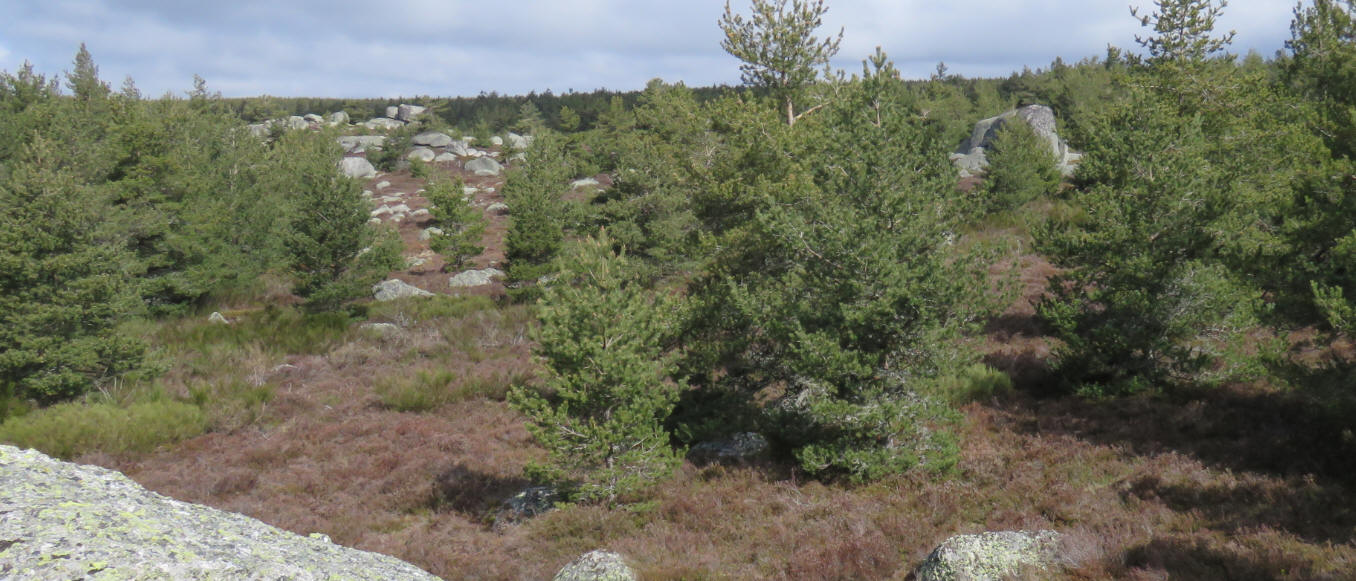
What first appeared to be a very dry desert a stone under a blazing sun, with some people living like Moors such as Horst, now appears to be more diverse. In the episode 62 "The bridge", we can even see
green valleys with many trees, large rivers and some fog. But if the wasteland is not as dry as we were told, it certainly becomes weirder... Crazy sects (56 "The gods" or 60 "Forbidden fruit"), zombies
(57 "The Gansari's zombies), spidermen (59 "Gorian the spider") crazy magicians (65 "The magician"), goddesses of the wind (66 "The wind wagon") and even fairy tale characters (67 "Goldilocks") live there.
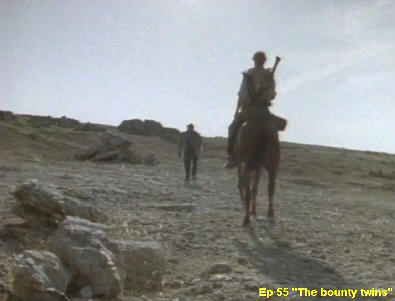
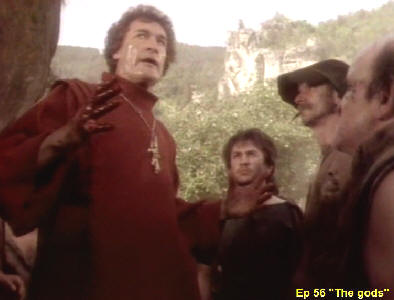
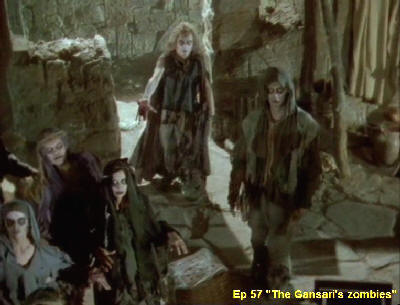
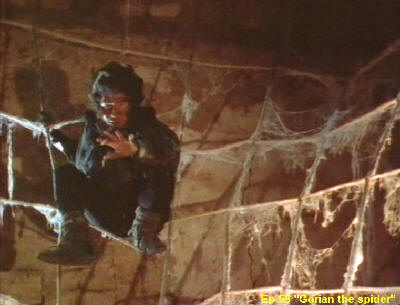
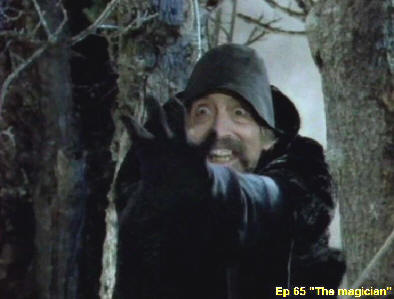
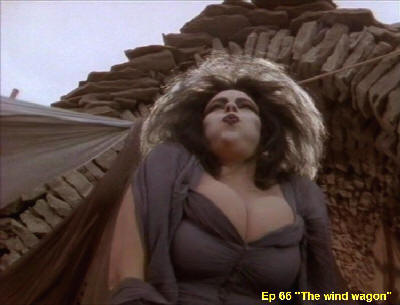
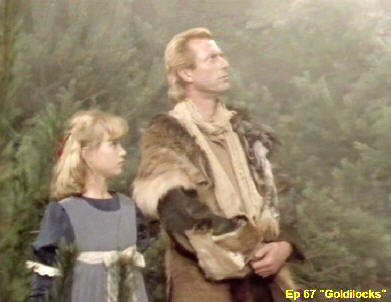
The climax of this journey into madness is reached after William saved Bayard, the dog of a shepherd that was trapped in the forbidden land (Ep 70 "Forbidden land"). The shepherd implores William to never
return there, or he would totally go crazy. But against all logic, William decides not to listen to the shepherd and to cross this land anyway. Once there, William begins to have hallucinations but he finally
meets with the woman who asked him to find her in the episode 49. The woman explains to William that he has now entered into the world of his past and memories, that he'll have to find who he really
is and fight against himself. But our hero will pass this test of the wasteland successffuly with some congratulations from the woman...
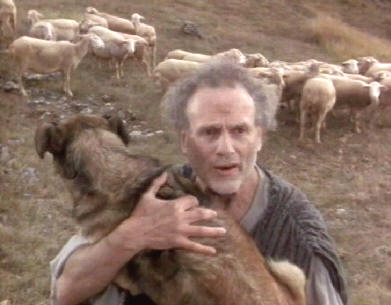
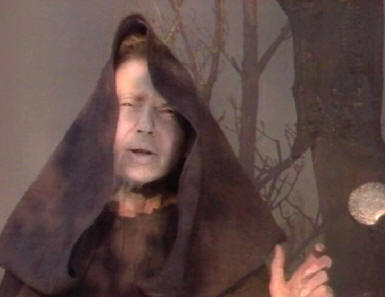
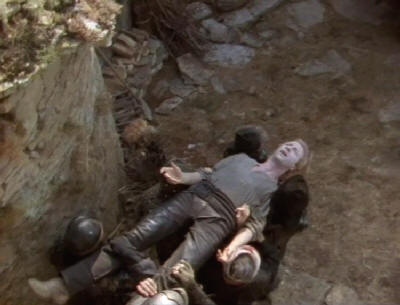
Location of the real wasteland
The
third saeson of Crossbow was entirely made in the French department Lozère, in southern France. And more precisely it was made around the
Tarn gorges, a canyon formed by the tarn river between two
limestone
plateaus, the causse of Sauveterre and the causse Méjean. "Causse" means limestone plateau in the French dialect Occitan. These two plateaus are in the south west of the Lozère department on the map below.
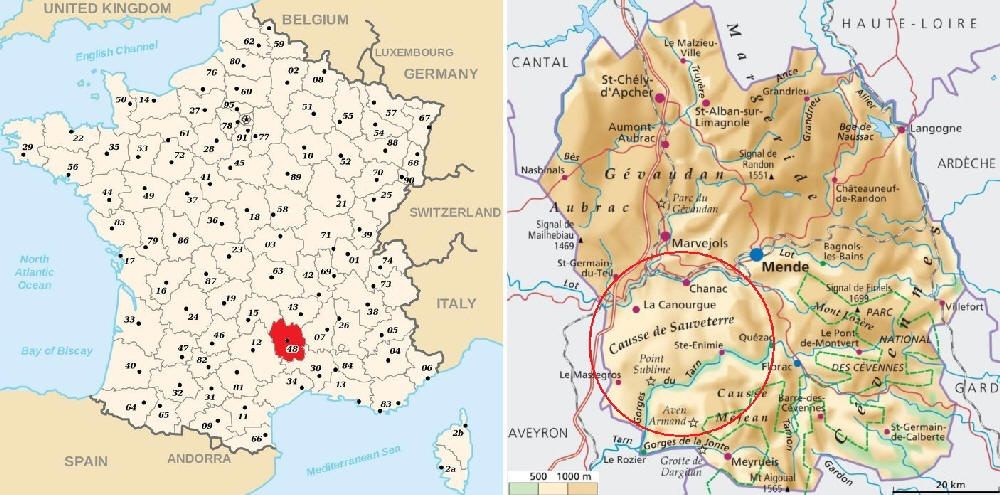
The following map made by C. Petit shows where most of the episodes where made, or supposedly made (click on the picture to enlarge). Some places
are still unlocated, like one of the farms used in the episode 52 "Doppelganger". Some others were entirely made in studio, like the episode 67 "Goldilocks."
Most of the episodes were made in the Tarn gorges and on the Causse of Sauveterre.
The Tarn gorges
The
Tarn gorges run on 50 km, from Le Rozier to Quézac (where the
bridge of episode 62 is). They are among the deepest gorges in Europe,
and they are extremely picturesque. Below The bridge of Quazac.
The Tarn gorges from the "Point sublime" belveder
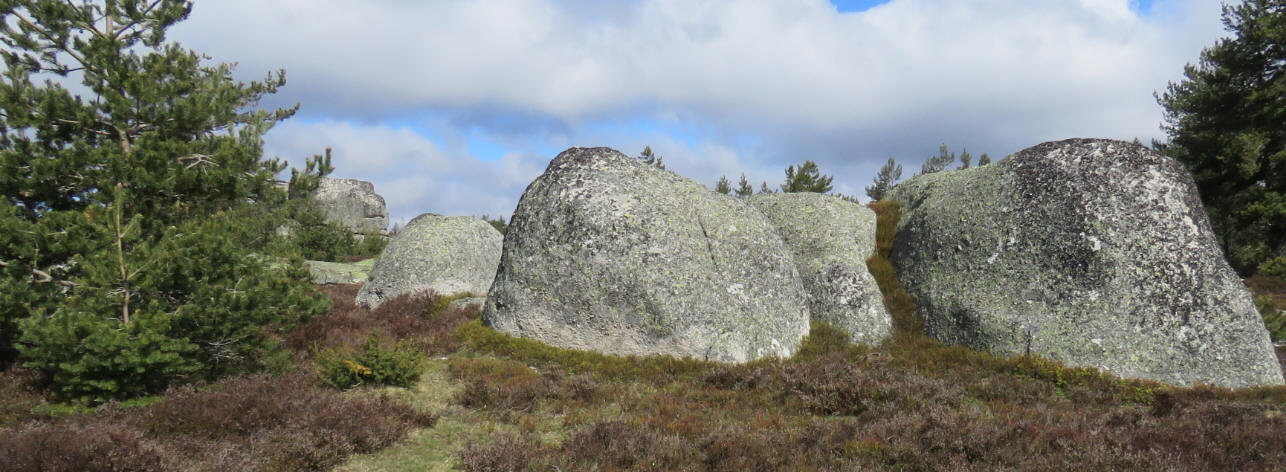

Down in the valley, some of the very beautiful medieval villages were used for the series, like Saint Chély (Ep 64 "The children"),
Sainte Enimie (Ep 60 "Forbidden fruit"), Castelbouc (Ep 56 "The gods") and of course Quézac with its old bridge.
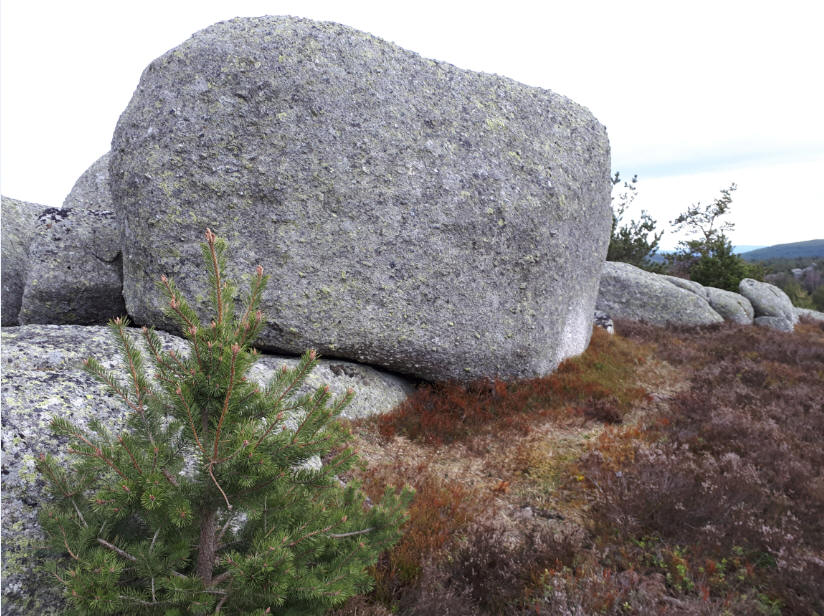
Hundreds of caves are hidden in this valley, but only a few of them is easily and freely accessed. Little caves were used in the episode 54 "The children" or in the
episode 70 "Forbidden land". But one of the most impressive is the Aven Armand cave on the causse Méjean, that was used in the episode 56 "The gods".
Our Lady of Cénaret chapel in Saint Chély du Tarn
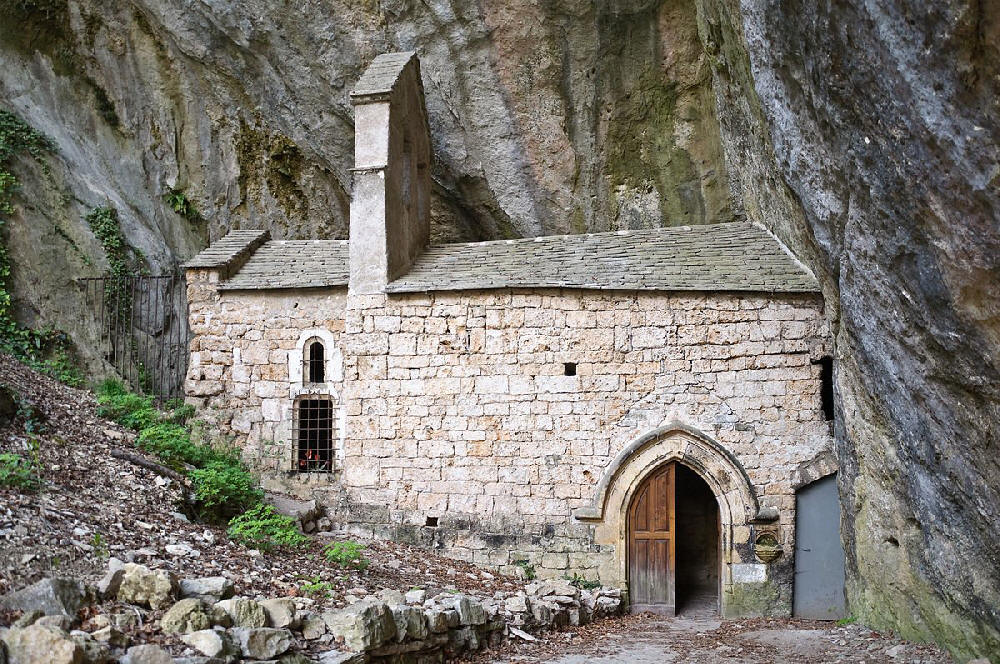
Sainte Enimie
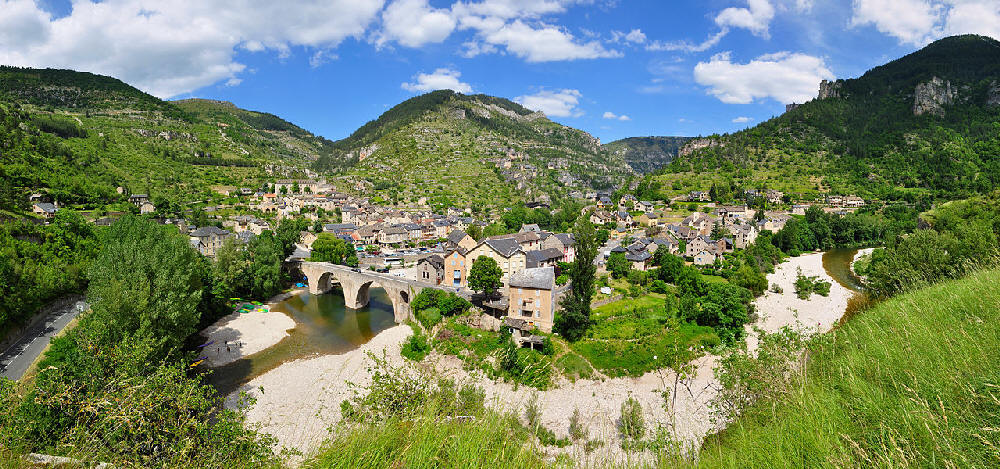
Castelbouc
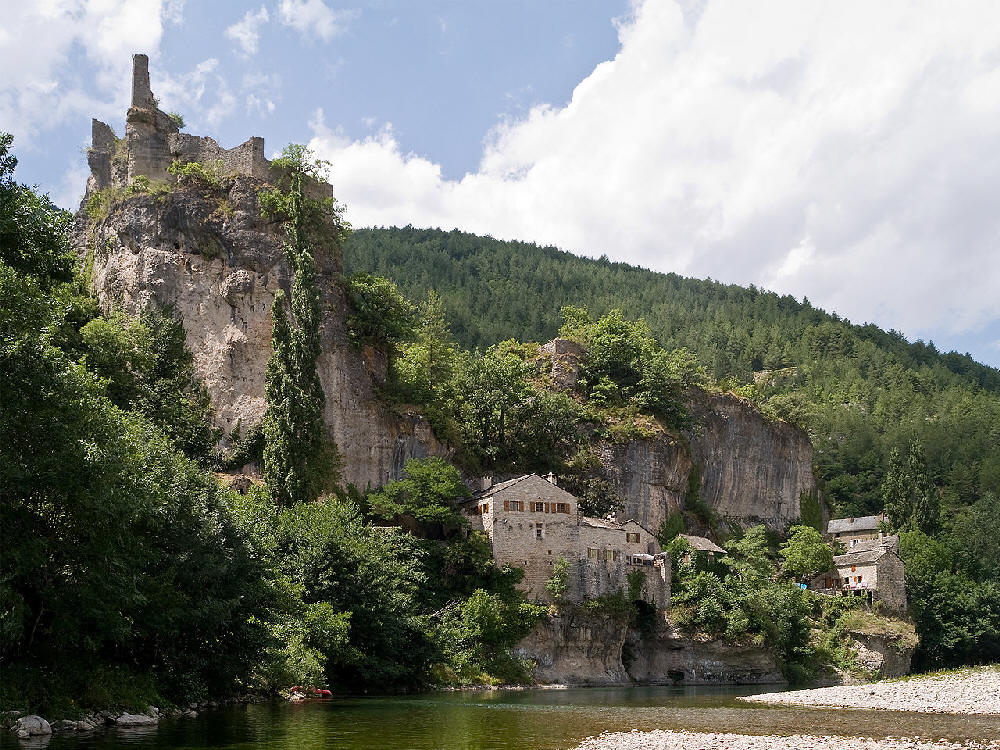
Chateau la Caze
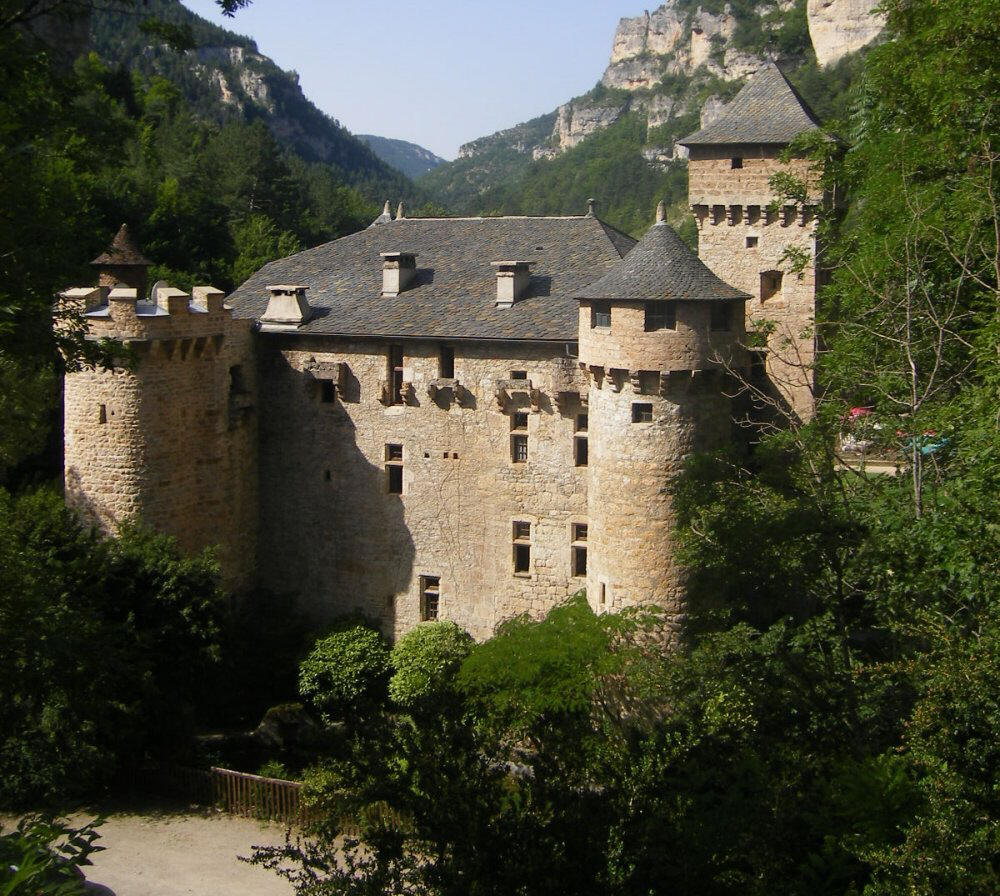
The Mermoz cave
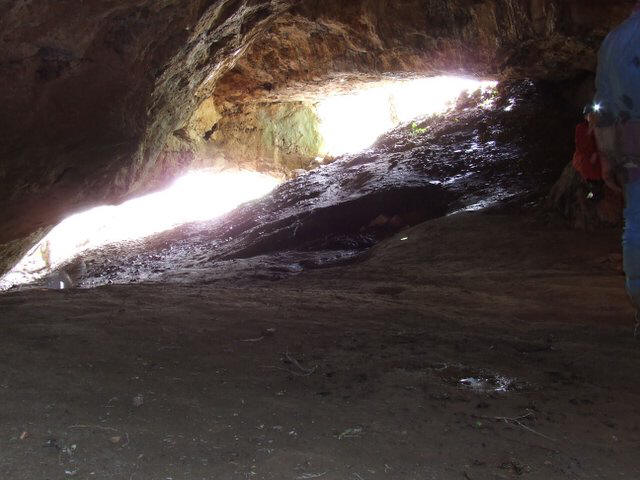
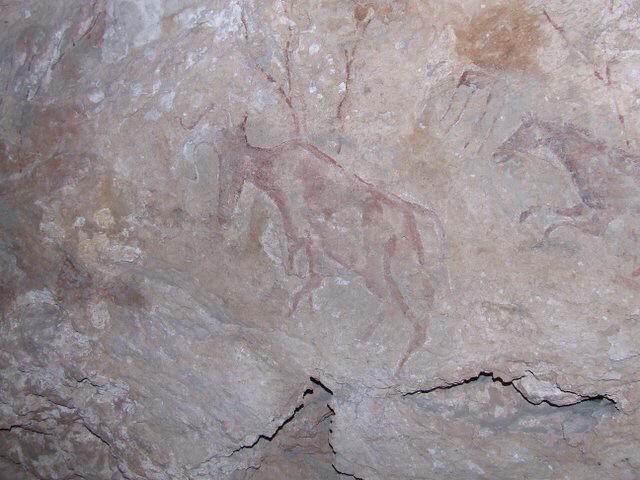
The Aven Armand cave
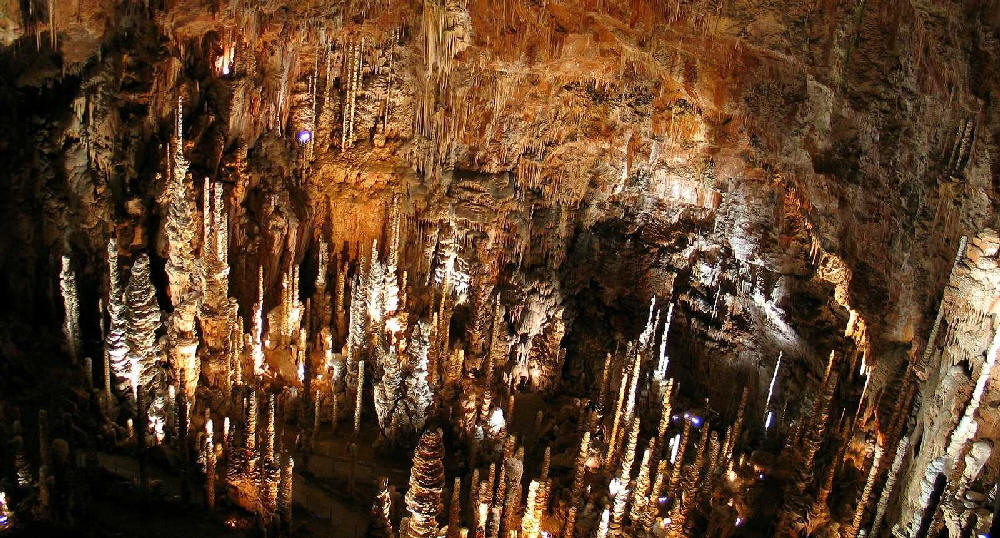
The causse of Sauveterre
Sauveterre
means "Safe land", safe from the human laws, where the medieval lords
were not allowed to apply their justice or to catch fugitives. Because
during the middle age, this land was under the protection of the
Benedictine community that had established in Sainte Enimie during the
tenth century.
The causse of Sauveterre is naturally divided into three regions :
The "causse pelé" (bare causse) in the eastern part of the causse. This part is very dry, with very large portions of deserts. However, pine trees have been planted in the recent history.
The "causse boisé" (wooded causse) in the middle of the causse. This part is hilly with dry valleys digged by the Tarn river and the Lot river. And a large portion is covered by the forest.
The "causse de Massegros" whose name comes from "Le Massegros" town. It has pasturelands and some pine woods on the border of Tarn gorges.
The
desert part is well shown in the episode 55 "Bounty twins". The
landscape is covered with limestone rocks and yellow grass, except when
the grass grows up in little sinkholes
where it stays green. However, a large variety of plants, bushes like the
boxwood or flowers like the carline (or cardabelle in French) or the aster grow there too.
The
desert part is well shown in the episode 55 "Bounty twins". The
landscape is covered with limestone rocks and yellow grass, except when
the grass grows up in little sinkholes where
it stays green. However, a large variety of plants, bushes like the boxwood or flowers like the carline (or cardabelle in French) or the aster grow there too.
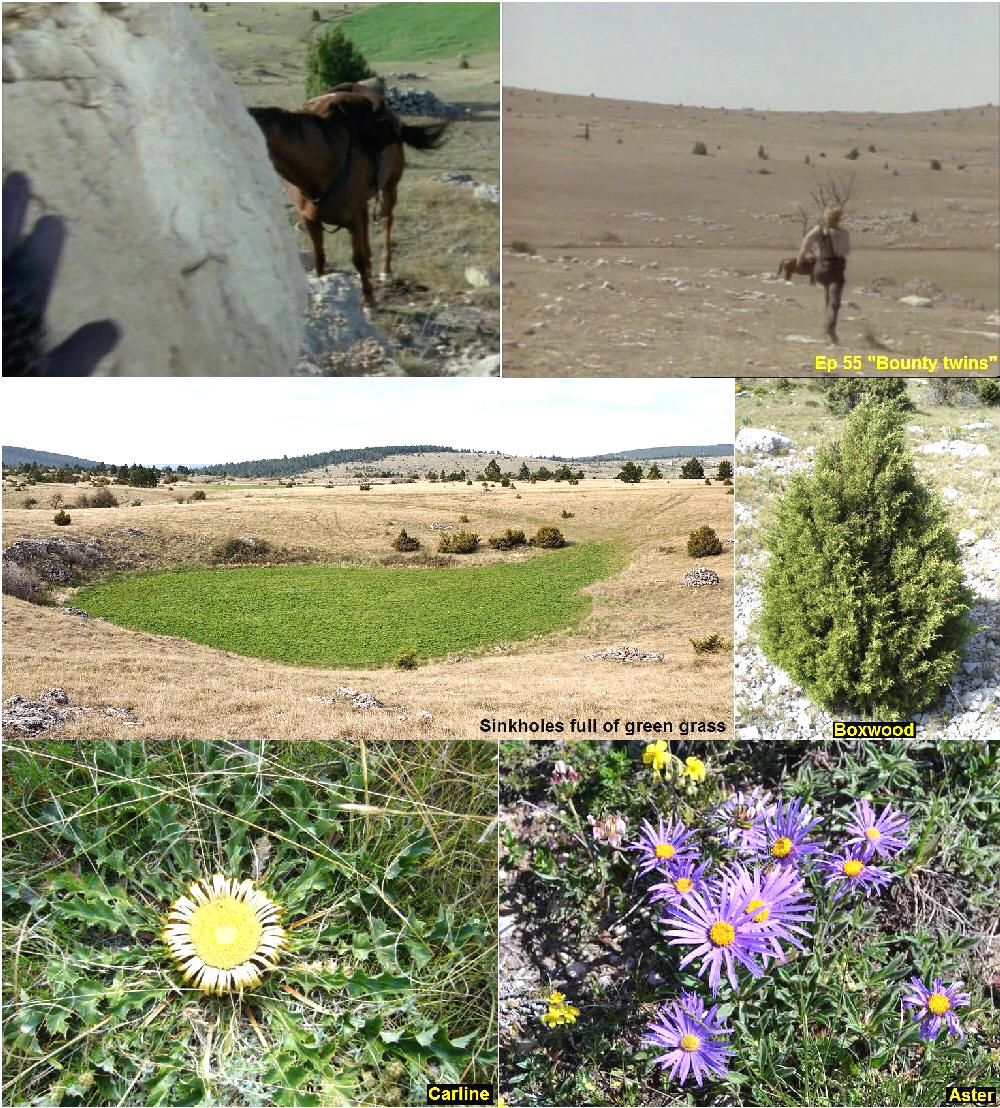
In
the recent history, pine woods have been planted on the causse of
Sauveterre. And we can see those dry woods in the episode 54 "The mission".
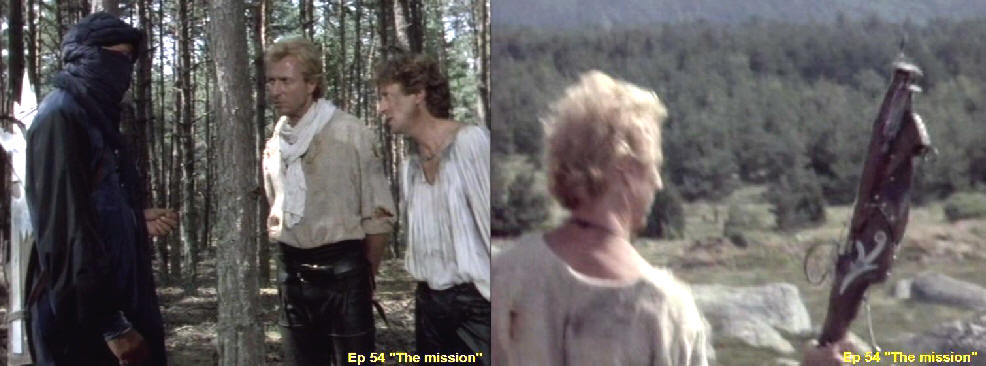
If the causse of Sauveterre is mostly covered with limestone, it's also covered with granitic rocks called chaos. These chaos were regularly used in the third season,
like in the episode 49 "The touch", where William hides or where he dies. In the episode 54 "The mission", the gate to the wasteland is also on a chaos. And in
the episode 58 "The shadow", Horst and Basai hide on a chaos. Below not the exact stones but an example. The stones are situated inMargaride mountains, Lozere.
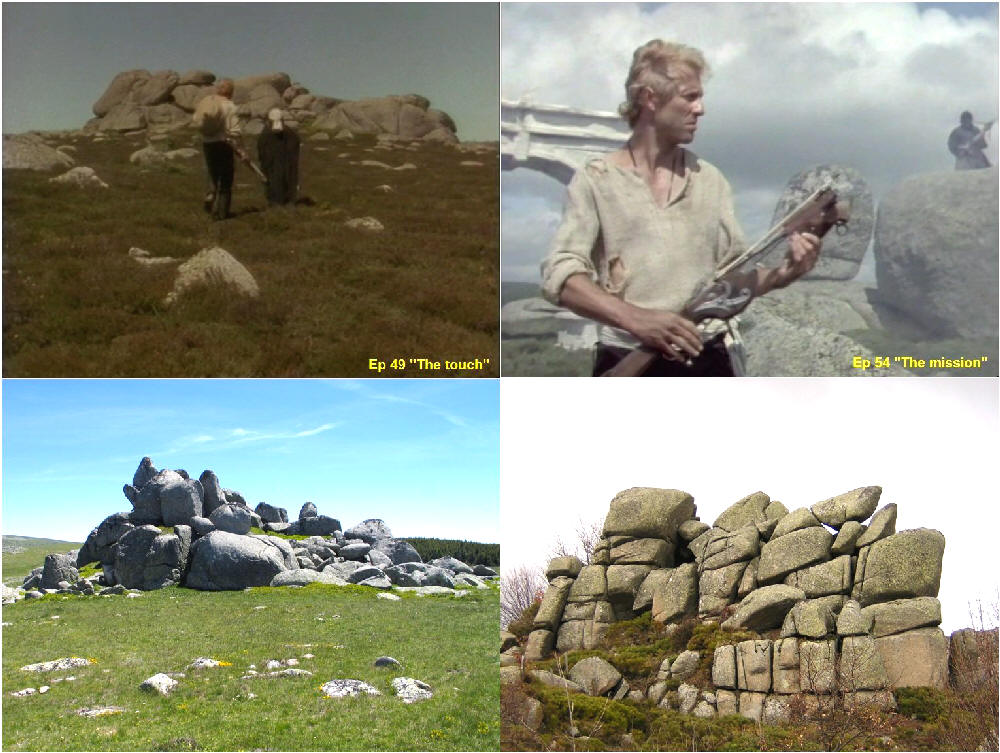
In
the recent history, pine woods have been planted on the causse of
Sauveterre. And we can see those dry woods in the episode 54 "The
mission".
However the causse of Sauveterre is not totally desert. There are smalls towns like Sauveterre town, used in the episode 70 "Forbidden land", or hamlets like La Périgouse used
in the episodes 55 "Bounty twins" and 57
"Gansari's zombies" or Les Palhers de Bramona, used in the episodes 61
"The lost city" and 68 "The Amazons".
There are also farms for the sheep-farming, an activity that is reviving nowadays on the causses.
A
typical farm of the causses has at least a vaulted sheepfold on the
ground floor,
a kitchen above and an attic under the roof. Balet stairs allow the farmer to access to the kitchen. Because of the rarity of the water in some parts of the causse,
they can have water tanks to
collect the rain water.
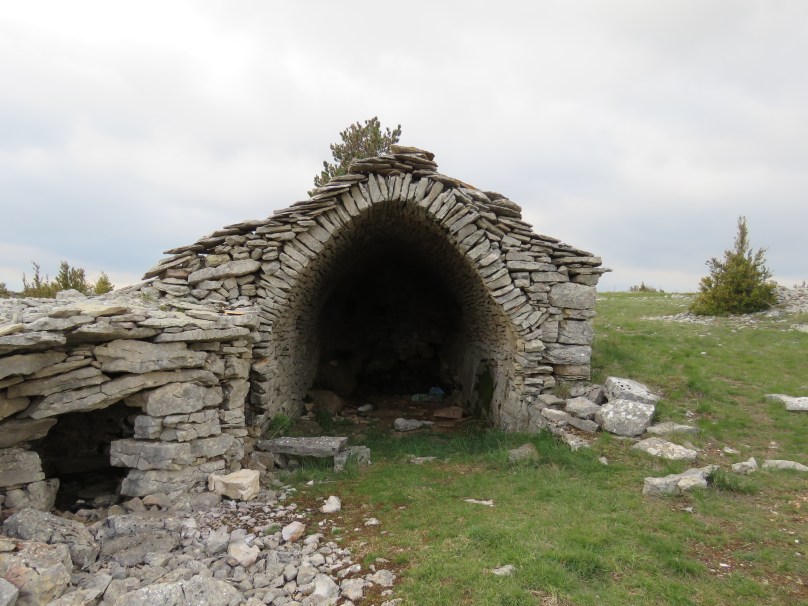
Many traditional farms were used in this third saeson, like the farm of Boissets, which is now a museum about the life on the causse of Sauveterre.
Detail of a roof to collect the rain water into a water tank
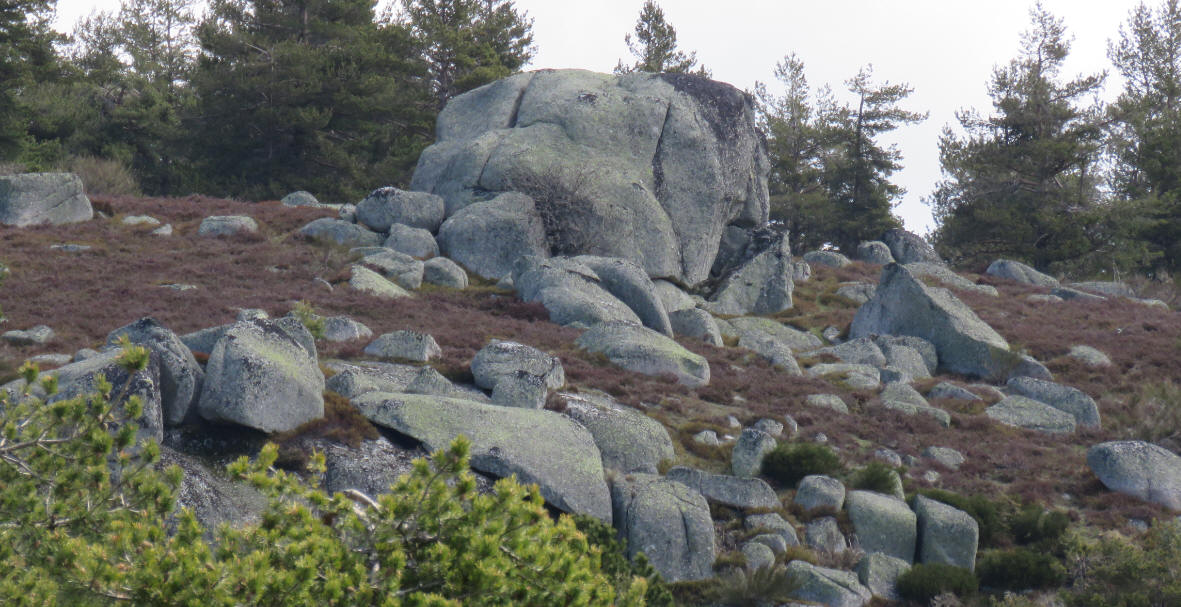
In this third saeson we can also see a small stone sheepfold called "jasse" that was used to
protect the sheeps at night during the transhumance
(movement between
higher pastures in summer and lower valleys in winter).
About the place
The place where the guide or Jonas live is called a "jasse" in French. It's a small stone sheepfold
typical of the causses in Lozere, France. The "jasses" were used
to protect the sheeps at night during the transhumance (movement between higher pastures in summer and lower valleys in winter). They have small windows to prevent
wolves to attack the sheeps. They slightly differ
from southern bories which were seasonal homes or barns for farmers in
the 19th century.
The 'Jasse' used in these two episodes is located in Lozere, not far
from Sauveterre town (where the farm in episode 70 is).
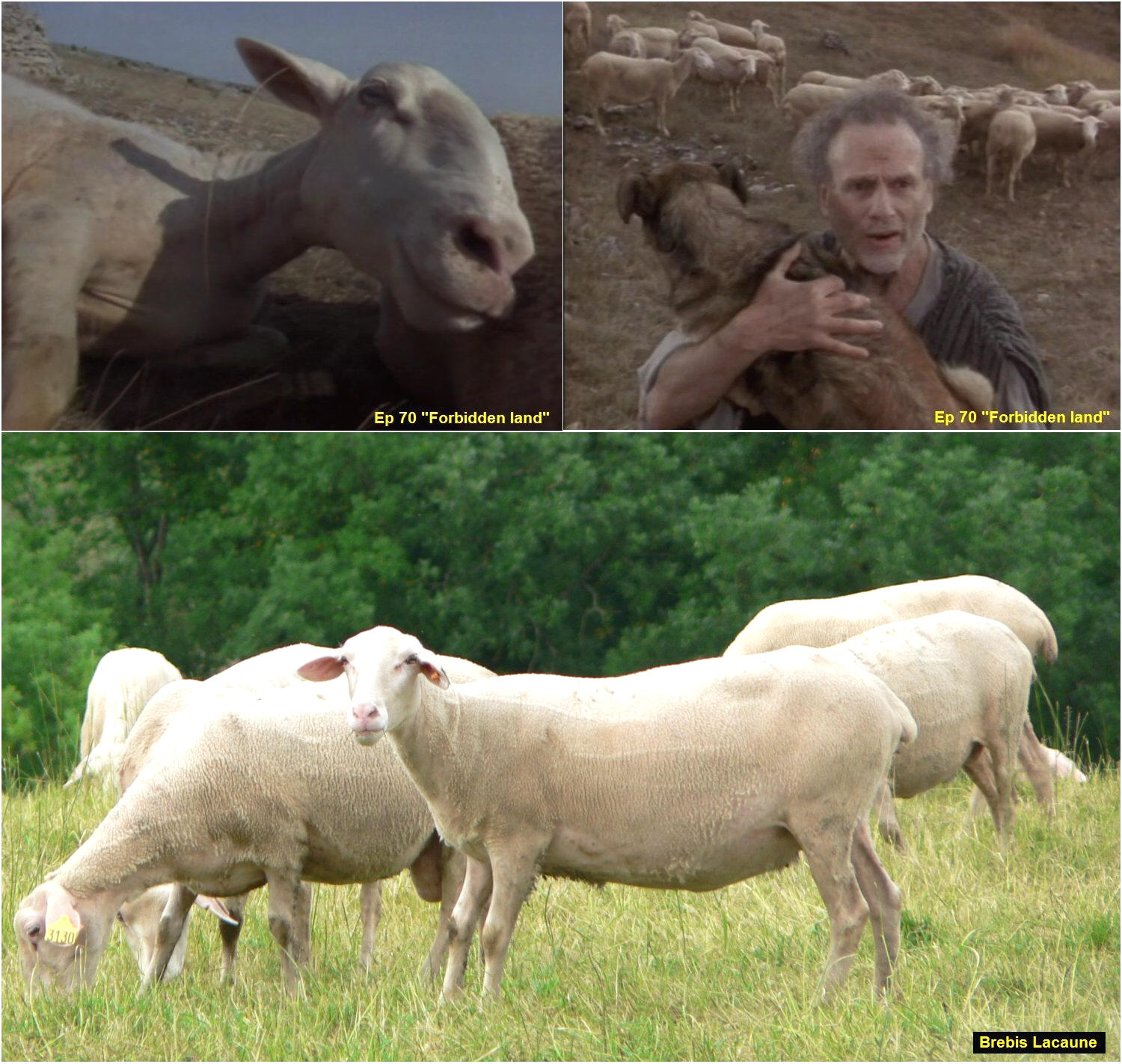
The sheeps that we see, especially in the episode 70 "Forbidden land" are brebis Lacaune. They are appreciated for their milk,
in order to make cheese like Roquefort for example.
In this third season we can also see a small stone sheepfold called "jasse" that was used to protect the sheeps at night during the transhumance
(movement between higher pastures in summer and lower valleys in winter).
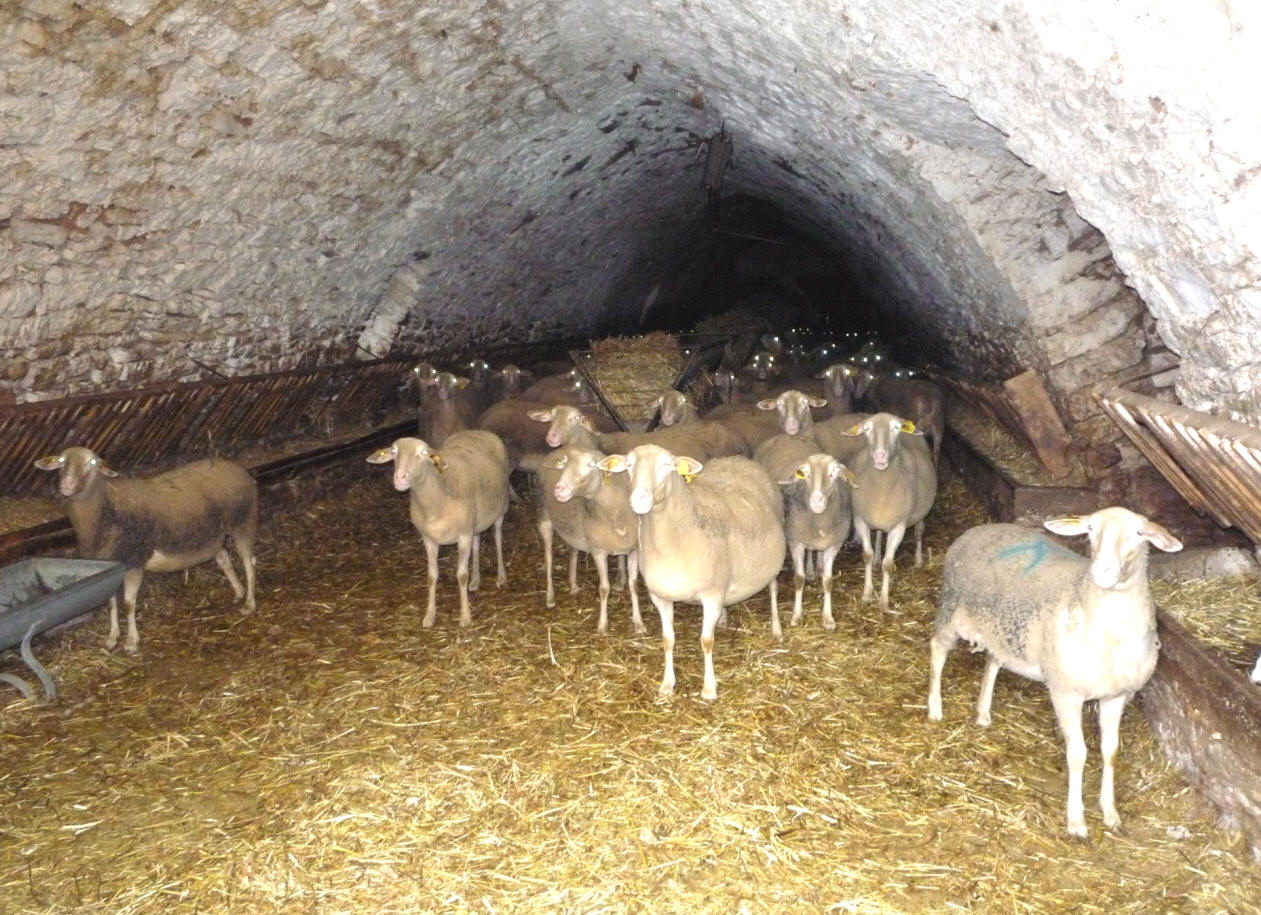
Sheepfolds were used a lot in this third season, like in the episode 68 "The Amazon" or 52 "Doppelganger".
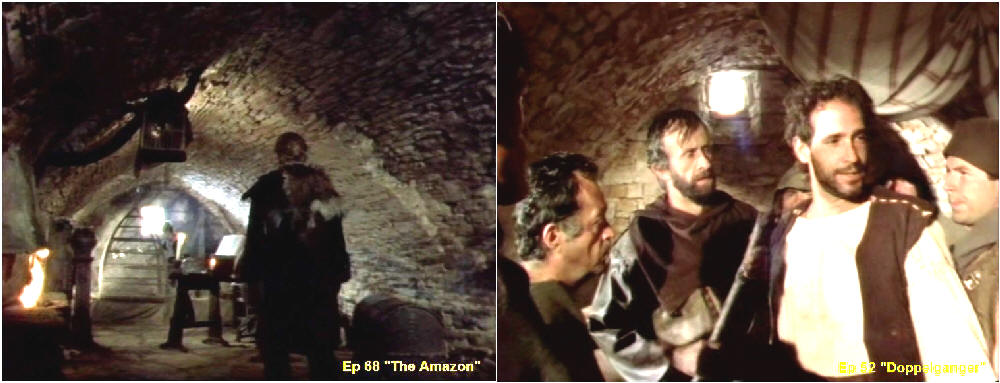
The desert part is well shown in the episode 55 "Bounty twins". The landscape is covered with limestone rocks and yellow grass, except when the grass grows up
in little sinkholes where it stays green. However, a large variety of plants, bushes like the boxwood or flowers like the carline (or cardabelle in French) or the aster grow there too.
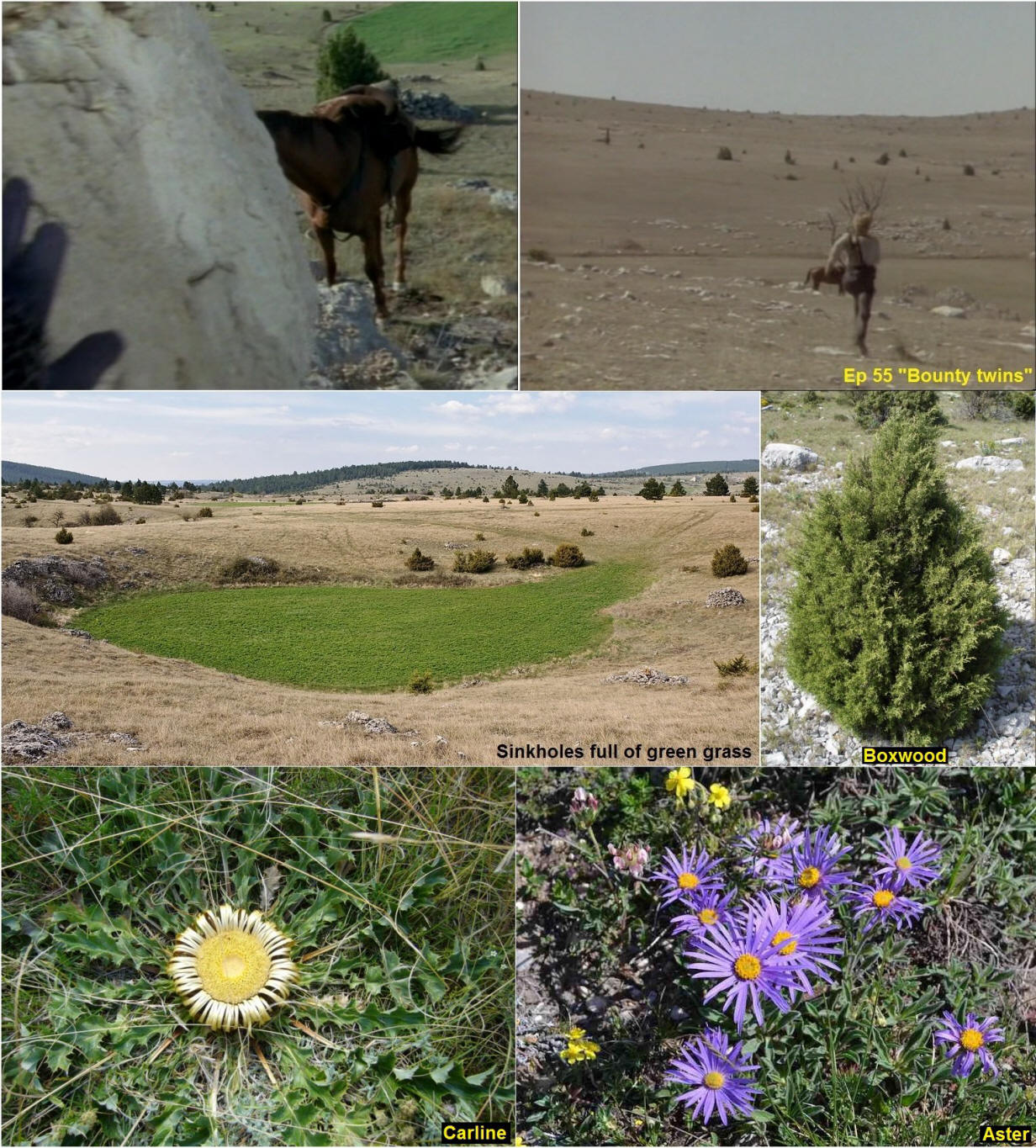
Note that the carline is also called the "shepherd's barometer" because, like the sunflower, it opens at the sun and closes when the rain
is coming. The local farmers use it as a lucky charm that they hang on their door. Moreover, its heart is eatable, like with the artichokes.
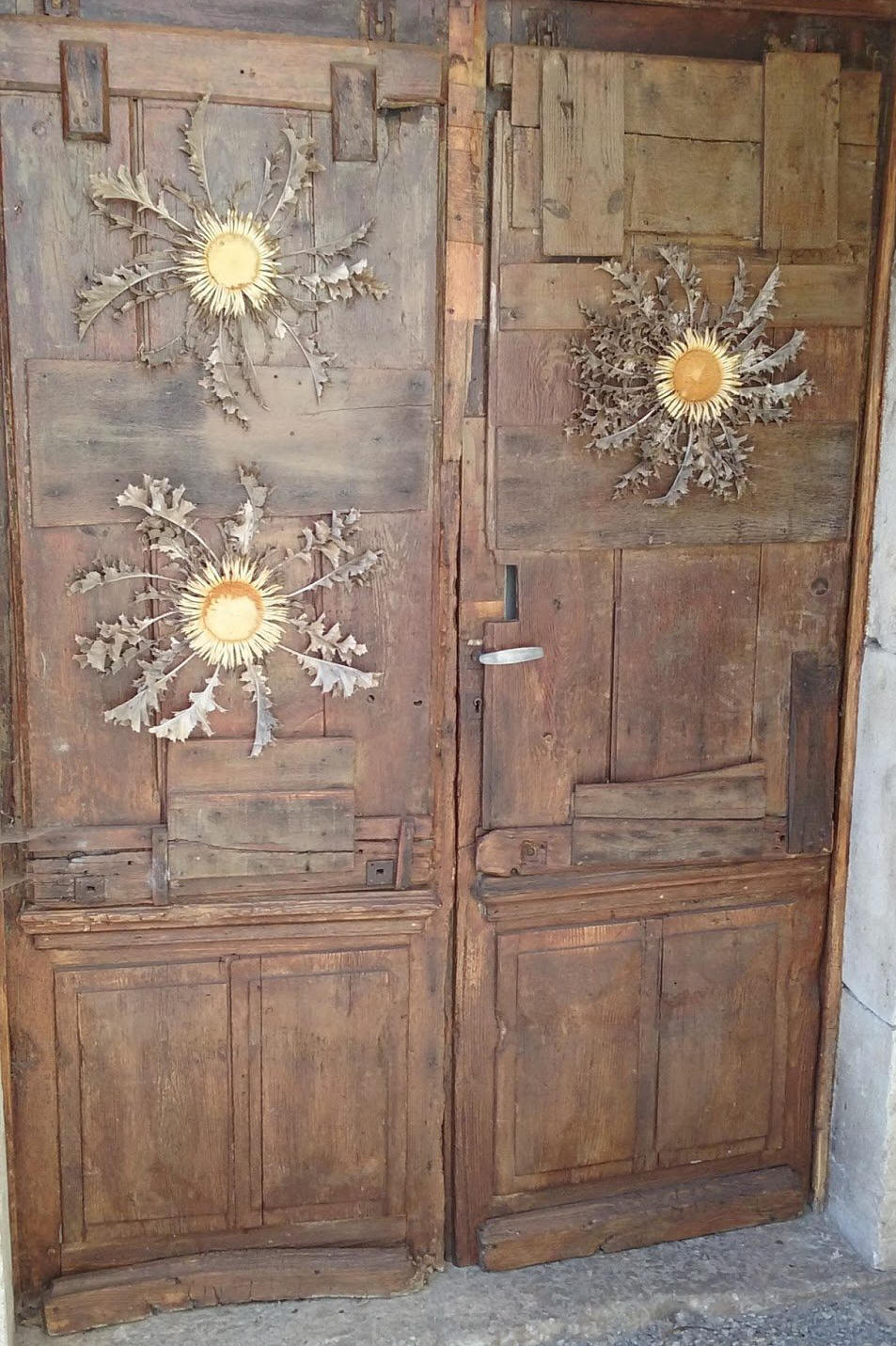
Many traditional farms were used in this third saeson, like the farm of Boissets, which is now a museum about the life on the causse of Sauveterre.
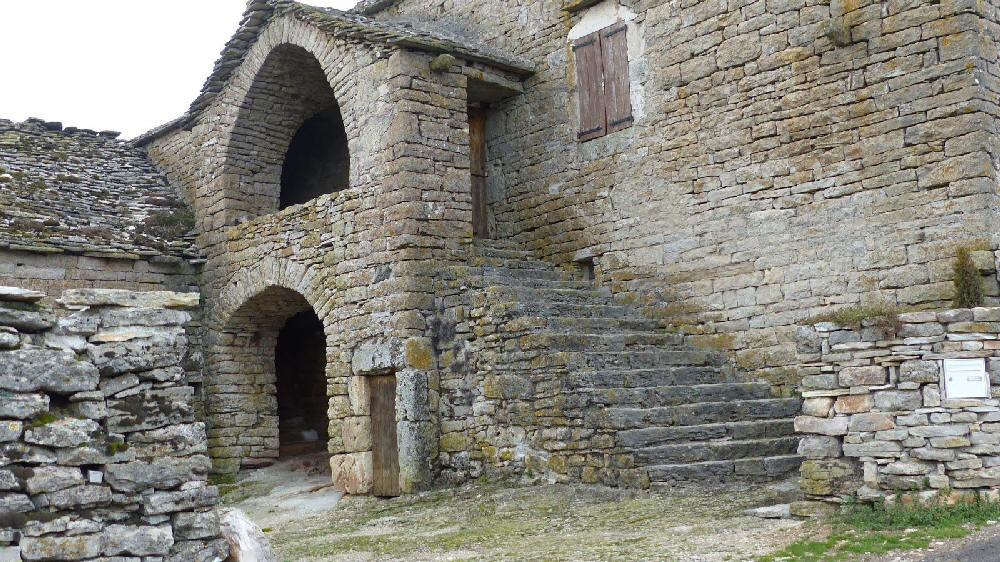
Detail of a typical door in La Fage town, with a discharging arch above to take off the superincumbent weight
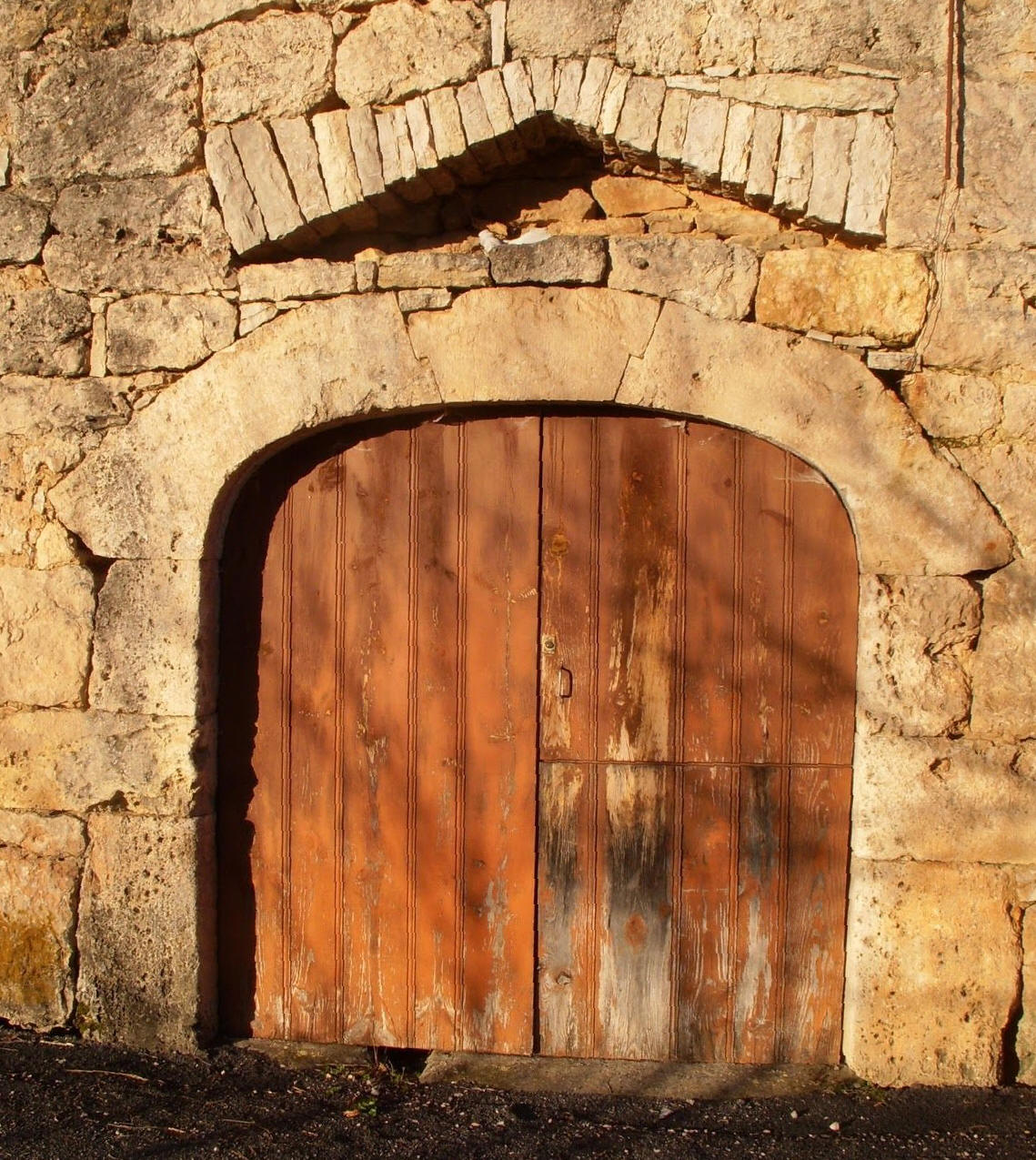
Back